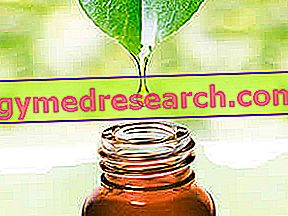
Scientific name
Claviceps purpurea You
Family
Hypocreaceae
Origin
Europe, Central Asia
Used Parts
Drug given by sclerotia, fungus wintering organs
Chemical constituents
- Ergot alkaloids: ergotamine and derivatives, ergotoxin and derivatives, ergometrine and derivatives.
Horned Rye in Herbal Medicine: Properties of Horned Rye
The drug is not used as such but represents the starting point for obtaining the individual active ingredients with pharmacological activity.
Biological activity
The ergot does not find uses in phytotherapy as such, but from the sclerotia particular alcaloids are obtained (defined ergot alkaloids ) that are used in the medical field.
The pure alkaloids or their derivatives, therefore, are available as active ingredients contained in medicinal products that can only be dispensed in the presence of a medical prescription. These molecules are: ergotamine, dihydroergotamine, dihydroergotoxin, ergonovine, methysergide, nicergoline, cabergoline, bromocriptine and lysuride.
Ergotamine and dihydroergotamine constitute the active ingredient of medicinal products with indications for the treatment of headaches and migraine attacks. These active ingredients counteract migraine pain through interaction with serotonin receptors located at the level of cranial arterial vessels. More in detail, ergotamine and dihydroergotamine exert an agonist activity against 5-HT1A, 5-HT1B, 5-HT1D and 5-HT1F receptors, thus inducing a vasoconstriction that leads to the resolution of headache and migraine pain .
Cabergoline and bromocriptine, on the other hand, are the active ingredient of medicines used in the treatment of a wide variety of disorders, such as: Parkinson's disease, hyperprolactinemia, prolactin-secreting pituitary adenomas, galactorrhoea, prolactin-dependent amenorrhea, menstrual dysfunction, acromegaly, hypogonadism and neuroleptic malignant syndrome.
The mechanism of action with which these molecules exert their activity involves the type 2 dopaminergic receptors present in the luteotropic cells of the adenohypophysis (ie in the cells responsible for the release of prolactin) and the dopaminergic neurons located in the nigrostriatal area of the brain.
Horned rye in folk medicine and homeopathy
In the past, ergot rye sclerotia was used by folk medicine as a hemostatic, emmenagogue and abortifacient remedy; in addition to being used in cases of menorrhagia, metrorrhagia, atony of the uterus and migraine.
Currently, the only approved use of ergot relates to its use in homeopathic medicine, where it can be found in the form of granules, capsules, oral drops and glyceric macerate.
In this context, the plant is used in case of spasms of uterine smooth muscles, paralysis, convulsions, circulatory disorders, haemorrhages, epistaxis, headaches, dizziness, drowsiness and confusional states.
The amount of homeopathic remedy to be taken can vary from individual to individual, also depending on the type of disorder that needs to be treated and according to the type of preparation and homeopathic dilution that is intended to be used.
Side effects
The side effects that can occur after taking the ergot are: nausea, vomiting, diarrhea, feeling of weakness in the legs, numbness of the fingers, muscle pain, tachycardia or bradycardia, angina pectoris, paresthesia, localized edema and confusional states.
In the case of chronic ergot poisoning or from its alkaloids, on the other hand, gangrenal ergotism (characterized by circulatory disorders of the limbs up to gangrene, in fact) or convulsive ergotism (characterized by the appearance of spasms, convulsions, hallucinations and loss of consciousness). These poisonings, in some cases, can also lead to death.
Contraindications
The therapeutic use of the ergot as such and not in the form of medicinal products prescribed by the doctor, is contraindicated in any case, especially in patients suffering from peripheral circulatory disorders, arteriosclerosis, liver and kidney disorders, coronary insufficiency, in pregnancy and lactation.
Of course, the use of the ergot and its alkaloids is contraindicated even in individuals with established hypersensitivity to one or more components.
Pharmacological Interactions
- macrolides, erythromycin, josamycin and clarithromycin: contraindication for the simultaneous use of ergotamine and dihydroergotamine, reduced hepatic elimination of alkaloids, ergotism and possible circulatory disorders in the extremities;
- beta-blockers: ergotism;
- bromocriptine: risk of vasoconstriction and acute hypertensive episodes;
- sumatriptan: risk of arterial hypertension and coronary spasms.



